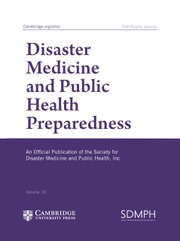No CrossRef data available.
Article contents
Perceptions of Healthcare Workers on the Attributes of the Integrated Disease Surveillance and Response System in Zimbabwe
Published online by Cambridge University Press: 16 May 2024
Abstract
To investigate healthcare workers’ perceptions of the integrated disease surveillance and response (IDSR) strategy.
A cross-sectional survey of healthcare workers (HCWs) was conducted from December 2021 to June 2022 to assess their perceptions of the IDSR system attributes.
Of the 409 respondents, 12 (2.9%) reported no prior training on disease surveillance. The IDSR was deemed simple, acceptable, useful, and timely by most participants. There were sharp differences in perceptions of flexibility and simplicity between doctors and the other healthcare professionals. However, acceptability, timeliness, and usefulness were uniformly perceived. Healthcare workers with at least 11 years of experience perceived the usefulness of the IDSR system significantly higher than those with lesser years of experience. However, work experience did not have an impact on HCWs perceptions of the simplicity, timeliness, and flexibility of the IDSR system.
Most healthcare workers have positive perceptions of the IDSR approach. However, there are reservations about how well the system can adapt to changing conditions and demands (flexibility) and how well it simplifies the implementation processes. These findings demonstrate the necessity of adopting cutting-edge strategies for capacity building as well as ongoing professional development of healthcare professionals responsible for the implementation of the IDSR strategy.
- Type
- Original Research
- Information
- Copyright
- © The Author(s), 2024. Published by Cambridge University Press on behalf of Society for Disaster Medicine and Public Health, Inc


